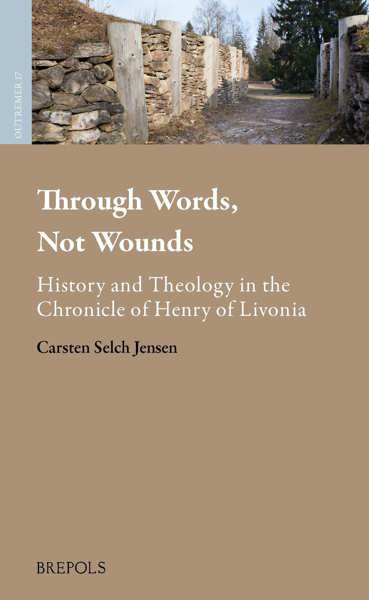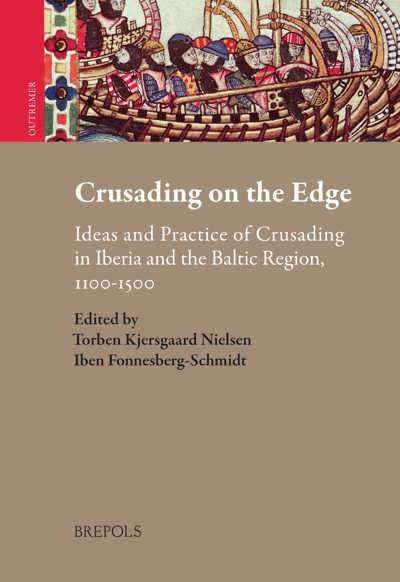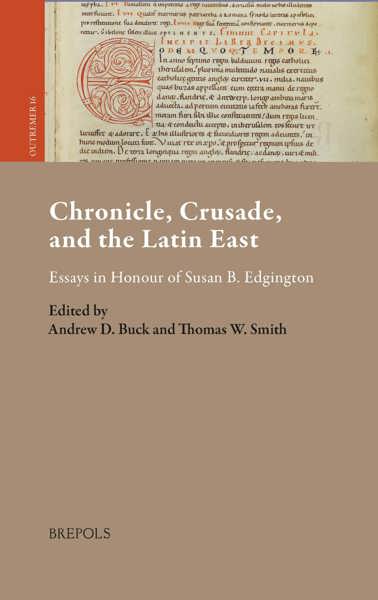
Through Words, Not Wounds
History and Theology in the Chronicle of Henry of Livonia
Carsten Selch Jensen
- Pages: 292 p.
- Size:156 x 234 mm
- Illustrations:2 maps b/w
- Language(s):English, Latin
- Publication Year:2024
- € 90,00 EXCL. VAT RETAIL PRICE
- ISBN: 978-2-503-58061-6
- Hardback
- Available
- € 90,00 EXCL. VAT RETAIL PRICE
- ISBN: 978-2-503-58062-3
- E-book
- Available
"...Jensen succeeds in providing a fresh, clear and engaging analysis of one of the most important sources for the history of the eastern Baltic in the Middle Ages which is sure to inspire further research and dialogue between scholars of medieval history, historiography and crusade studies." (Gregory Leighton, in Journal of Medieval History, published online, 28 May 2025)
The chronicle of Henry of Livonia has long been recognized as the single most important source on the early history of Livonia and Estonia in the late twelfth and early thirteenth centuries.
The chronicler describes in great detail how the people of the region were subjected to intense campaigns of crusading and mission from the 1180s until the 1220s, primarily at the hands of ecclesiastical and secular powers of Northern Germany (Saxony), Denmark and Sweden. The chronicler himself, a German cleric named Henry (Henricus), was not only active in recording the events that happened around him. He also took a very active role as a missionary and interpreter among the indigenous population as well as joining the armies of crusaders on campaign, making this chronicle both a first-hand account and a very intriguing narrative. Papal missionary politics and theological ideas are intermingled in the chronicle with detailed descriptions of military campaigns, raids and sieges, making the entire chronicle a fascinating read.
The aim of this book is to clarify the ways in which Henry construes the historical events that he describes, portraying them as the continuation of a form of sacred history that was initiated by God in biblical times and continued by clerics and crusaders among Henry’s own peers.
1. Introduction
1.1 Scope of the Study
1.2 The Study of Medieval Chronicles: Recent Scholarship, Theory and Methodology
1.3 Henry of Livonia: His Life, Work and Influence
2. Sacred History Set in Motion: Legitimation of the Early Mission
2.1. The Mission in Livonia as divinum opus: A Divine Work
2.2. A Geographical Space or a Cognitive Geography?
2.3. Baptism and Apostacy among the Livs: The Primary Legitimisation of the Mission
3. Pagans and Orthodox Christians
3.1. The Pagan Tribes
3.2. Ydola perfida: Pagan Beliefs
3.3. The Rus’ians and the Orthodox Church
4. War as Theology
4.1. The War of the Lord
4.2. Promises of Spiritual Rewards for Participants in the War of the Lord
4.3. Divine Intervention in Battle
4.4. Dies belli: Military Service as Divine Service
4.5. Desecration of the Landscape through War
5. Work in the Lord’s Vineyard: Sacralisation of a Field of Mission
5.1. The Field of Mission as the Lord’s Vineyard
5.2. The True Workers in the Lord’s Vineyard
5.3. The False Workers in the Lord’s Vineyard
5.4. The Watering of the Lord’s Vineyard with the Martyrs’ Blood
6. The Christian Life
6.1. Sowing the Seeds of the Gospel: Preaching as a Tool in the Dissemination of the Christian Faith
6.2. Conversion and Baptism
6.3. Imagery of God
6.4. The Good Life: The Rules for a Christian Life
6.5. Representations of the Good Death and the Afterlife
7. Conclusion




